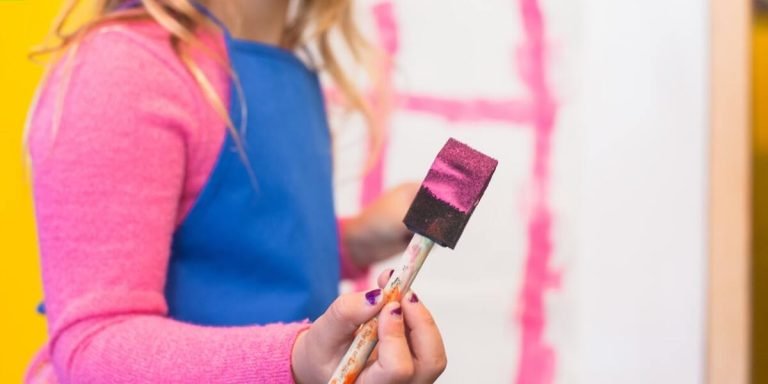Kinesthetic Learner Definition: A Comprehensive Understanding for Parents and Educators
Understanding the kinesthetic learner definition is crucial for both parents and educators in creating an effective learning environment. This type of learner benefits most from a hands-on approach known as activity-based learning, where they actively participate in activities that involve movement.
This blog post will delve into detailed exploration of the term ‘kinesthetic learner’, shedding light on its relevance to childhood education, various characteristics associated with it, and how it impacts a child’s learning process. By comprehending this concept better, we aim to navigate you towards expertly tailored strategies designed around activity-based learning which can stimulate young minds more effectively.
Did you know?
Did you know that kinesthetic learners make up approximately 5% of the population? Despite being a minority, their unique learning style can significantly contribute to diverse educational practices.
The Role of Kinesthetic Learning in Enhancing Cognitive Skills
Kinesthetic learning, by definition, is an educational approach that engages children’s bodies in the acquisition of knowledge. This compelling teaching strategy goes hand in hand with the concept of activity-based learning and has become a key player in enhancing cognitive skills amongst learners. In this age where digital technology integration significantly contributes to education, understanding kinesthetic learning becomes more crucial than ever.
Movement serves as the foundation of kinesthetic learning, fostering experiential and active interaction between students’ physical actions and their brains. Advanced technological tools designed for educational purposes enhance this method, creating a dynamic classroom environment that promotes deeper comprehension and engagement. Educators utilize interactive whiteboards or virtual reality software to create scenarios where kids physically interact within digitally rendered environments, striking the perfect balance between real-world experience and tech-driven instruction.
Moreover, integrating technologically based activities into curriculum seamlessly marries traditional pedagogical strategies with modern methods which cater effectively to those who identify themselves predominantly as kinesthetic learners–those needing motion-activity engagement at higher frequencies during lessons. Adopting such approaches not only refines motor skills but also aids memory retention along intrinsic processing pathways–enhancing overall learner performance vis-a-vis long-term data retrieval capabilities alongside promoting creativity & problem-solving acumen manifold times!
Understanding the Kinesthetic Learner Definition: A Deep Dive
The kinesthetic learner definition revolves around an education model where learning occurs as students engage in physical activities. Rather than strictly listening to lectures or reading textbooks, a predominant teaching method for traditional learners, the kinesthetic approach places emphasis on movement and experience.
In the landscape of 2023’s childhood education system, integrating technology has become paramount. It offers new ways to incorporate activity-based learning methods that cater specifically to these types of learners. Virtual reality (VR), augmented reality (AR) and other immersive technologies present unique opportunities for educators aiming at enhancing cognitive skills through active engagement.
VR can be utilized brilliantly within this pedagogical framework by providing highly interactive environments mimicking real-world scenarios—be it exploring space or diving underwater—which are otherwise impossible using conventional approaches alone.
Augmented Reality overlays digital information onto one’s immediate environment, thereby enriching their sense of reality with added layers of virtual interactivity aimed at encouraging curiosity-led exploration—a trait associated closely with our beloved ‘doers’ aka ‘kinesthetic learners’.
Online educational games represent another tech-integrated strategy appropriate for instilling valuable knowledge while keeping pupils physically engaged—the essence of being a kinesthesic learner itself! These fun-filled platforms stimulate critical thinking abilities while delivering grade-appropriate curriculum content via fascinating quests often requiring collaborative action from participants.
Practical Applications of Activity-Based Learning for Cognitive Development
Understanding the kinesthetic learner definition is vital to realizing its application in technology integration for education. Kinesthetic learning focuses on carrying out physical activities, rather than listening to lecture or watching demonstrations. As an effective strategy that encourages children to learn by doing, it plays a significant role in enhancing cognitive skills.
Technology has made it possible to introduce activity-based learning methods into the classroom setting more effectively and efficiently than ever before. From interactive whiteboards and tablets offering educational games, digitally simulated experiments have been instrumental in engaging young learners’ minds through hands-on experiences.
One practical example of this could be seen with augmented reality (AR) games used as teaching tools. These provide kids with immersive learning experiences where they interact directly with digital objects within their real-world environment – perfect for appealing towards our little energetic students who are often classified under the kinesthetic leaner definition.
Virtual Reality (VR), too, holds tremendous potential when we speak about activity-based learning strategies linked closely with cognitive development. Imagine how impactful a history lesson can turn if instead of reading from textbooks; children don VR goggles that transport them back thousands of years!
Equally promising technologies include 3D printers which allow learners not only see but also touch what they’ve learned – making concepts all more tangible! This kind-of sensory engagement will undeniably boost knowledge retention power among youngsters proving beneficial while appearing for examinations or participating confidently during class conversations.
Integrating Movement into Classroom Instruction for Improved Engagement
Understanding the kinesthetic learner definition is crucial for educators in 2023 striving to enhance engagement levels of their students. Often referred to as tactile learners, these individuals learn best via physical activities rather than just reading or listening. They thrive when they can use movement and touch within classroom instruction, blending technology with kinetic learning strategies gives them an innovative tool that maximizes their unique abilities.
Technology integration makes it possible to bring room for improvisation into traditional educational settings. Simple tech devices like tablets allow kids who are kinesthetic learners access vast realms of information while simultaneously using hand movements and retaining what they’re learning through a tangible experience. Incorporating virtual reality (VR) takes this blend even further by giving these learners an immersive platform where they get hands-on experiences in digital environments.
Activity-based learning methodologies such as robotics workshops or coding sessions let children indulge in both mental stimulation from problem-solving tasks and physical activity from assembling parts or writing on boards respectively. These approaches not only cater directly towards the needs of your tactile students but also enrich overall student participation thanks to modern ed-tech tools designed keeping different kinds of learners’ characteristics in mind.
Strategies to Incorporate Physical Activities in Lesson Plans
The incorporation of physical activities into lesson plans is an effective way to enhance the learning experience, particularly for kinesthetic learners. By definition, a kinesthetic learner absorbs information best through movement and touch. They thrive when they can interact physically with their environment during lessons.
Adopting activity-based learning strategies and integrating technology in education cater to diverse learners and inject excitement and engagement across all student types. Here are savvy methods educators can use:
1. **Gamification:** Use motion-sensing tech tools like Kinect or Wii that make interactive gaming part of the curriculum.
2. **Virtual Reality (VR) Field Trips:** This isn’t ordinary sightseeing; students get moving as VR headsets take them on realistic tours around historical landmarks or even inside human anatomy!
3. **Active Apps:** Utilize educational applications designed for tablets or smartphones that encourage children to move while solving math problems or creating art pieces.
5.Endorse Break-out sessions: Integrate outdoor classes where kids utilize GPS-enabled devices to undertake scavenger hunts based on course topics—turning study time into fun adventures!
Designing Interactive Workshops Tailored to Kinesthetic Learners
It’s no secret that adding movement into the classroom can enhance student engagement, but kinesthetic learning goes beyond just getting students up and moving. Defined as a learning style in which education occurs by carrying out physical activities rather than listening or watching demonstrations, the “kinesthetic learner definition” emphasizes active participation for effective knowledge acquisition.
Embrace technology integration in education deeply this year, 2023, by designing interactive workshops tailored specifically for kinesthetic learners. Here’s how you can achieve this:
- Create hands-on activities that involve movement and tactile experiences.
- Incorporate physical objects and tools that students can manipulate.
- Develop games and simulations where learners can engage physically.
- Use technology like virtual reality to simulate real-world environments for exploration.
Commence with simplicity: Start your workshop design focusing on simple yet substantial movements like standing-up during discussions or changing seats among peers frequently throughout lessons. These small motions foster excitement and improve attention spans amongst pupils.
Infuse Learning Stations: Create different ‘learning stations’ within classrooms where each station induces unique activity relevant to specific topics of study – an ideal approach of Activity Based Learning (ABL).
Use Education Technology Tools: Incorporate latest tech tools such as virtual reality headsets or fitness gaming consoles i.e., Wii Fit Plus that stimulate physical action while enhancing cognitive skills – perfect for our kinesthetically inclined young scholars!
Implement Group Games & Activities: Educational games involving group work instigate peer interaction along with promoting healthy competition —a win-win situation indeed! Some examples are role-playing exercises based on storylines they’re studying currently; conducting quick quizzes using mobile devices etc.
Measuring Outcomes of Activity Based Learning Approaches
Harnessing the power of technology in education can greatly enhance learning outcomes, especially for kinesthetic learners. Traditionally defined, a kinesthetic learner is one who learns best through physical activity or direct involvement in an experience. In today’s digitally fueled world where traditional teaching methodologies may not suffice to engage every type of learner effectively, integrating interactive technologies into classroom activities proves beneficial.
Activity-based learning approaches are particularly well-suited to these tactile individuals. They provide hands-on experiences and promote active engagement with content which aligns perfectly with their natural inclination towards movement and exploration. As we move further into 2023, technological advancements continue to refine how educators implement this pedagogical approach that underline success metrics beyond mere cognitive recall.
Measurement of such outcomes requires evaluating both tangible progress markers like problem-solving abilities or topic comprehension alongside softer measures including self-confidence growth or interpersonal skills development within group tasks made possible by technology-enabled environments. From virtual laboratories enabling real-time scientific experiments to game designs fostering mathematical concepts graspability – digital tools augment Activity-Based Learning effectiveness multifold while making outcome measurement more comprehensive yet straightforward.
Assessing Skill Acquisition and Retention in Kinesthetic Environments
Kinesthetic learners learn best by ‘doing’ rather than merely observing or listening. These individuals possess exceptional motor memory, allowing them to absorb information efficiently through physical activities like hands-on tasks and interactive exercises.
A key characteristic of ABL method lies within the ultimate goal: skill acquisition and retention. Unlike traditional classroom settings where knowledge gained may not be practically used or lost over time, employing active techniques reinforces cognitive recall due to its tangible nature.
Technology adds an extra layer of depth into this educational model. For instance, Virtual Reality (VR) can convert theoretical lessons into immersive experiences that stimulate both mind and body – every kid’s dream come true! Augmented Reality (AR), being another user-engaged medium, permits students to step beyond textbooks; they interact directly with virtual elements projected onto their real-world environment.
Simultaneously assessing these acquired skills proves crucial from an educator’s perspective as it helps gauge effectiveness on a personal level—some kids might take longer than others—but also overall curriculum efficiency. But how does one measure outcomes accurately? Here’s when evidence-based assessment tools save the day!
Online quiz platforms offer immediate feedback mechanisms enabling educators instant clarity regarding student comprehension levels following each activity session—an excellent way for continuous improvement tweaks throughout course duration.
Impact Analysis: Comparing Traditional Teaching with Activity-Based Methods
Understanding the term “kinesthetic learner definition” is pivotal when discussing activity-based learning methods. In educational psychology, kinesthetic learners are individuals who learn best through activities that involve physical movements. This means they absorb information more effectively by doing, moving and experimenting rather than simply listening or observing.
Traditional pedagogical approaches mainly rely on direct instruction where teachers disseminate knowledge typically via lecturing while students passively take notes. While this method can be effective for auditory or visual learners, it could potentially limit the engagement level among kinesthetic students as their specific learning needs may not be adequately addressed.
In contrast, technology integration within education has led to a rise in innovative teaching techniques such as Activity Based Learning (ABL). Integrating movement with cognitive processing allows children – particularly kinesthetic ones – an opportunity engage actively with concepts being studied; thus encouraging deeper understanding and improved retention rates.
Conclusion
In conclusion, understanding the kinesthetic learner definition can be transformative in effectively nurturing young minds. It provides a unique lens through which we view our youngsters’ learning process – spotlighting their innate desire to express knowledge physically. Parents and educators who grasp this meaning have an essential tool that encourages active engagement, interaction and hands-on approach; all vital components for a thriving educational environment.
Of course, every child is wonderfully distinct with possibly varying or mixed learning styles. This makes continual enlightenment on matters of childhood education crucially important. To stay ahead of these complexities and ensure you’re raising well-rounded children or finding success in your teaching career, take time to delve deeper into other educational insights available around our website!
After all, evolving with the dynamic sphere of childhood education isn’t just beneficial—it’s fundamentally necessary.







